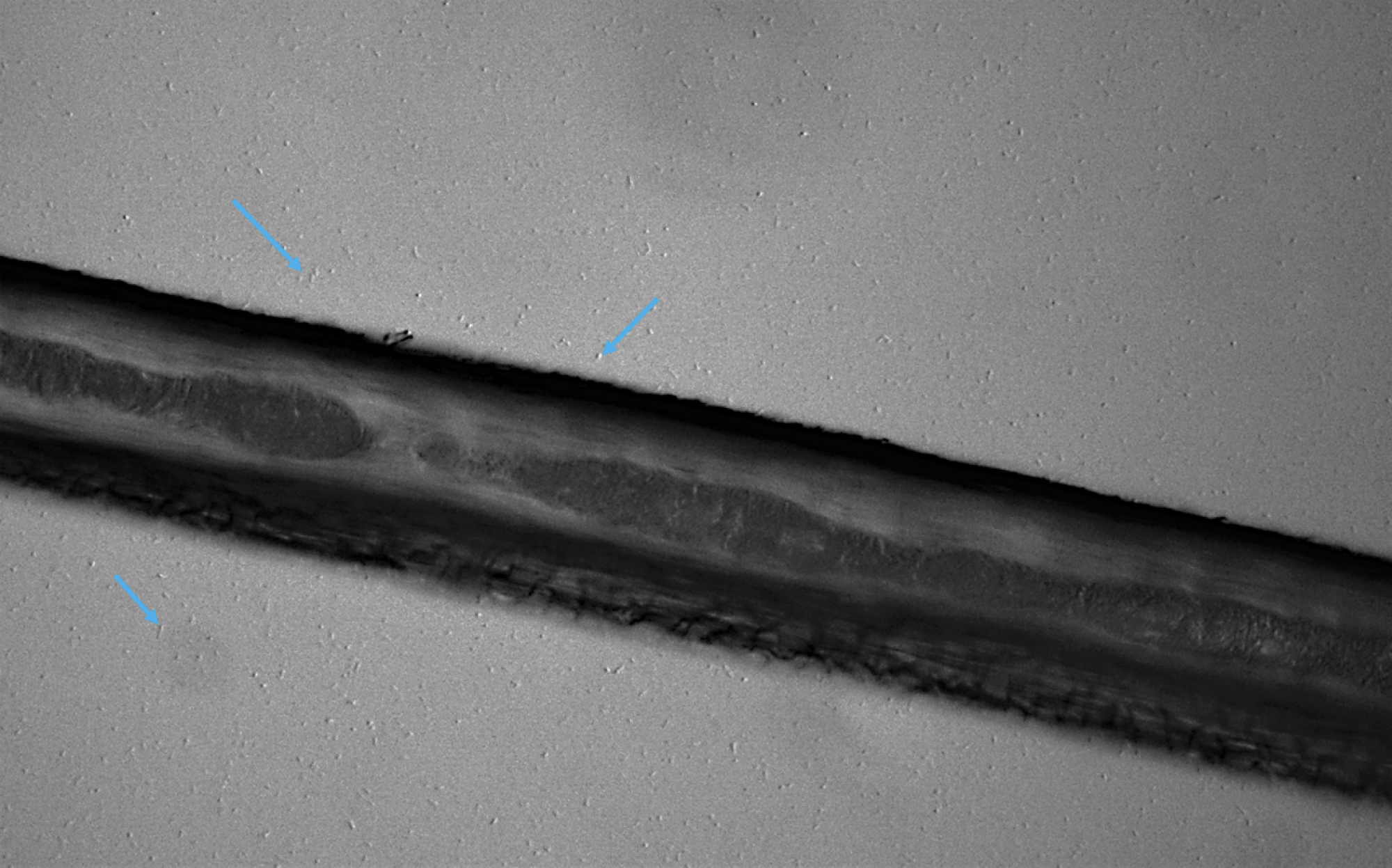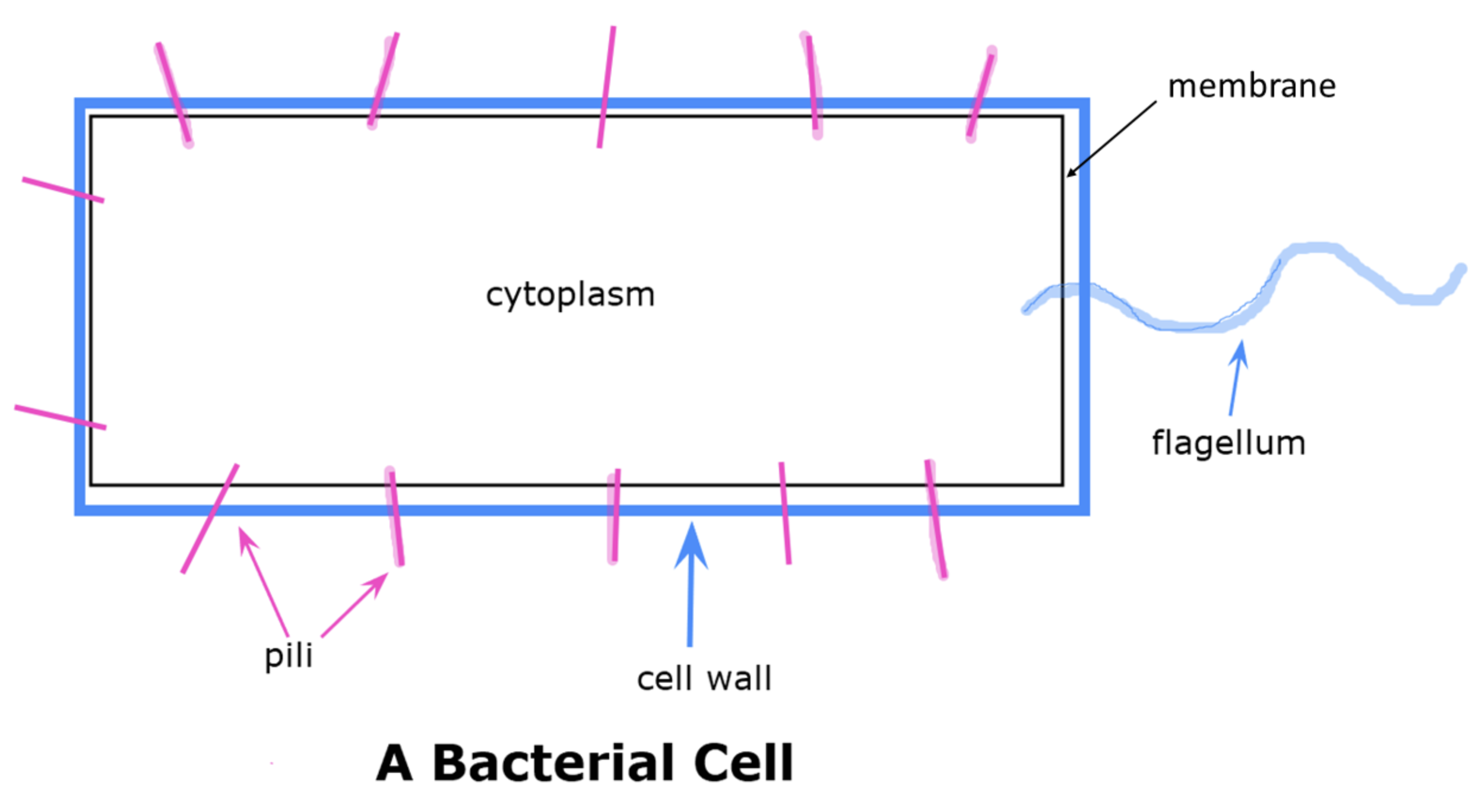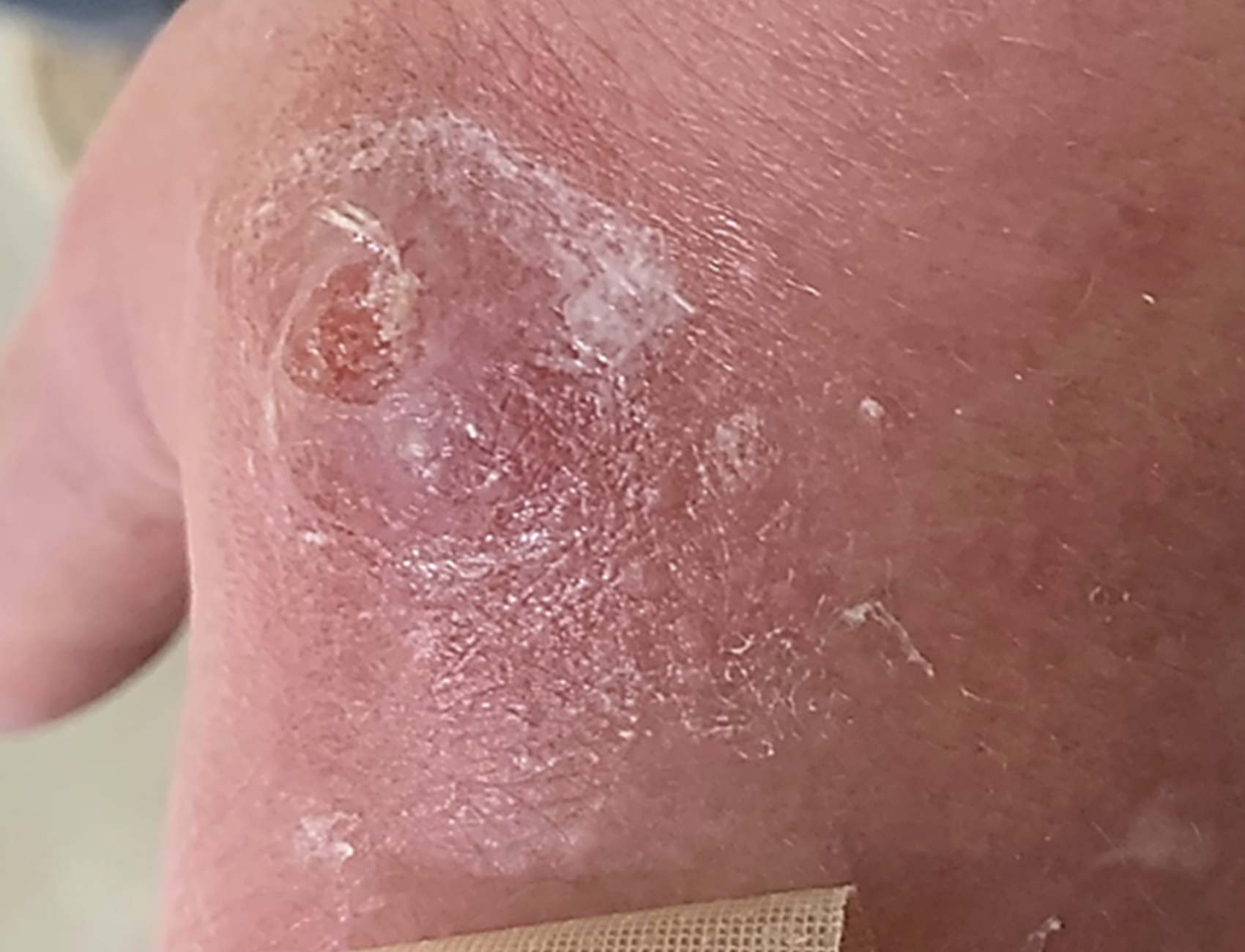Ann G. Matthysse, from the University of North Carolina’s Department of Biology, delves into an exploration of harmful and useful bacteria for elementary school students
Most people have heard of bacteria but know very little about them. In general, bacteria are considered by many people to be dangerous or harmful organisms which should be killed. However, this is a misconception as most bacteria are either beneficial or neutral with respect to our lives and the planet on which we all live.

Where bacteria live
Bacteria are extremely small organisms. You cannot see them without a microscope. Figure 1 shows a human hair and bacteria as seen in the light microscope. Although they are very small, bacteria can do some interesting things. Many bacteria can swim using a propeller-like structure called a flagellum. Some bacteria can hold onto surfaces by using projections from their surface called pili. These structures are shown in the illustration in Figure 2.
Many bacteria live in environments in which they need to be resistant to changes in their surroundings. Most bacteria are surrounded by a cell wall which gives them strength so that they are not killed by detergents or distilled water (as found in rainwater) or other stressful things.
Many bacteria live in soil. Some of these bacteria help plants to get the nutrients they need by converting the nitrogen gas in the air into ammonia which the plants can use. Other bacteria are involved in the mineral cycles which keep the ecosystem running. They help to cycle carbon, iron, sulfur, phosphate, and nitrogen. Some bacteria are photosynthetic although they may not be the same colour as photosynthetic plants; they are often pink or purple as well as green.
Bacteria can also make things we use such as Swiss cheese and yogurt, while other bacteria can be used in industrial processes to make vitamins and medically useful products such as insulin.
Some can live in extreme environments such as under the Antarctic ice sheet or in hot springs at Yellowstone National Park. The bacteria under the ice sheet are eaten by the small crustaceans called krill which are in turn eaten by whales and other sea animals. This means that the whales are indirectly dependent on the bacteria for their food and thus their lives.
There are bacteria that can use things which we find unusual as food, for example, getting their energy from oil. These bacteria are quite destructive when they get into oil storage tanks. However, they are very useful when there has been an oil spill on a beach as they can be spread on the spill and will convert the oil into compounds which are less harmful to the environment.


Bacteria and the human body
We provide the environment in which many species of bacteria live. Some bacteria live on our skin. Remember that bacteria are exceedingly small so different parts of our skin provide vastly different environments for bacteria. Many bacteria live in our digestive tract and provide helpful functions in the digestion of food and the production of vitamins such as vitamin K. If you have taken oral antibiotics, you know that they often give you a bit of an upset stomach. This is because they killed many of the useful bacteria in your intestines. Doctors sometimes suggest that after you take an antibiotic you should eat food containing a probiotic or eat something which contains useful bacteria such as yogurt as these bacteria may then replace the bacteria which died.
Bacteria and disease
However, as you know not all bacteria which grow in or on the human body are helpful. Some of them cause diseases such as diarrhoea, sore throats, boils on the skin (see figure 3) and various other diseases. These bacteria live using nutrients supplied by your body. They may kill some of your cells to get the nutrients they contain. Your skin, stomach acid, and mucous in your nose and throat act as barriers to prevent bacteria from getting inside you. When they do get in, your white blood cells try to eat the bacteria and kill them. In turn, the bacteria try to kill your white blood cells. The white pus and the white material at the centre of a boil like the one seen in Figure 3 contain bacteria and live and dead white blood cells.
Antibiotics and bacterial disease
Antibiotics are chemicals which specifically stop the growth of, or kill, bacteria. One of the first antibiotics was penicillin. This chemical prevents the bacterium from making new cell wall. If the bacteria try to grow and get larger but cannot make new cell wall, then they end up with a gap in the wall. This gap makes the bacteria fragile, and they burst and die. Since we humans do not have cell walls surrounding our cells, we are unaffected by penicillin. Thus, we can safely take this drug when we have a bacterial infection. (It should be noted that viruses do not have cell walls and so penicillin does not kill them). Other antibiotics act in a similar way to block something that bacteria need that humans do not have or do not need.
Bacteria are very small organisms with a simple structure. They can be useful or harmful depending on the kind of bacterium and on the situation in which they are found. Antibiotics can be used to kill bacteria which cause disease without harming people because antibiotics block the production (or activity) of structures which are found in bacteria but not in humans.
*Please note: This is a commercial profile
© 2019. This work is licensed under CC-BY-NC-ND.











